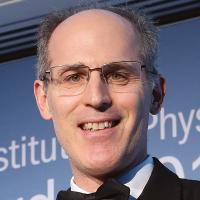This project seeks to experimentally explore how cells build structures external to themselves in a robust and accurate manner such that embryonic development exhibits directionality and harbors evolutionary potential. In particular, they will use two model organisms representing simple multicellularity (green algae and aquatic sponges), apply quantitative mathematical approaches based on cutting-edge observational methods and image analysis (e.g., microfluidics, light sheet and confocal microscopy) to gather four-dimensional data on development, and then experimentally test hypotheses using mutant strains, biochemical interventions, and physical manipulations. A key output of this project will be standardized observational and experimental tools for application to other model systems and new mathematical models of physical embryo dynamics related to topological changes driven by cell growth and elasticity that can be utilized by other developmental researchers.

Raymond Goldstein
Agency and Directionality in Development
Physical aspects of early multicellular development
Subaward Principal Investigator
University of Cambridge
Ray Goldstein received undergraduate degrees in physics and chemistry from MIT, and a PhD in theoretical physics from Cornell University. Following postdoctoral work at the University of Chicago and faculty positions in physics and applied mathematics at Princeton University and the University of Arizona, he moved to Cambridge University as the Schlumberger Professor of Complex Physical Systems in 2006. His research interests span from statistical physics to nonlinear dynamics and geophysics, with particular emphasis on biological physics, both theoretical and experimental. His work has been recognized by the Stephanos Pnevmatikos Award in Nonlinear Science, an Ig Nobel Prize (with Patrick Warren and Robin Ball) for explaining the shape of ponytails, the G.K. Batchelor Prize in Fluid Mechanics and the Rosalind Franklin Medal of the Institute of Physics. He is a fellow of the American Physical Society, the Institute of Physics, the Institute of Mathematics and its Applications, and the Royal Society.
